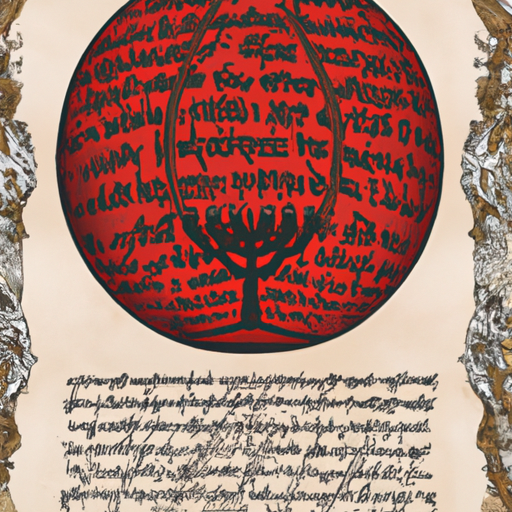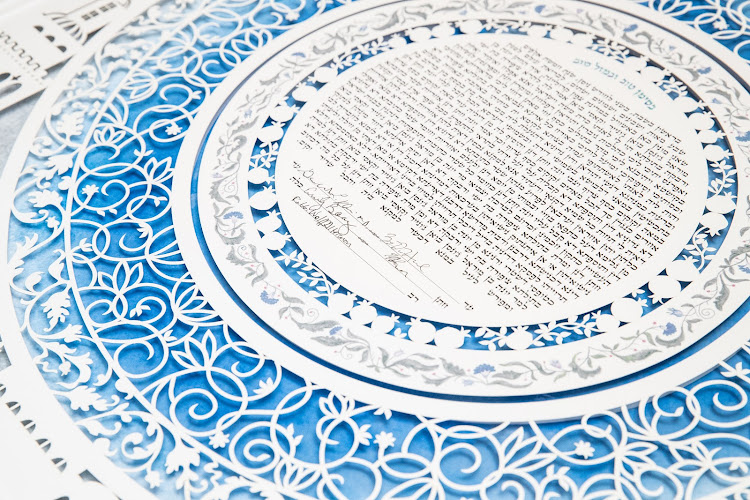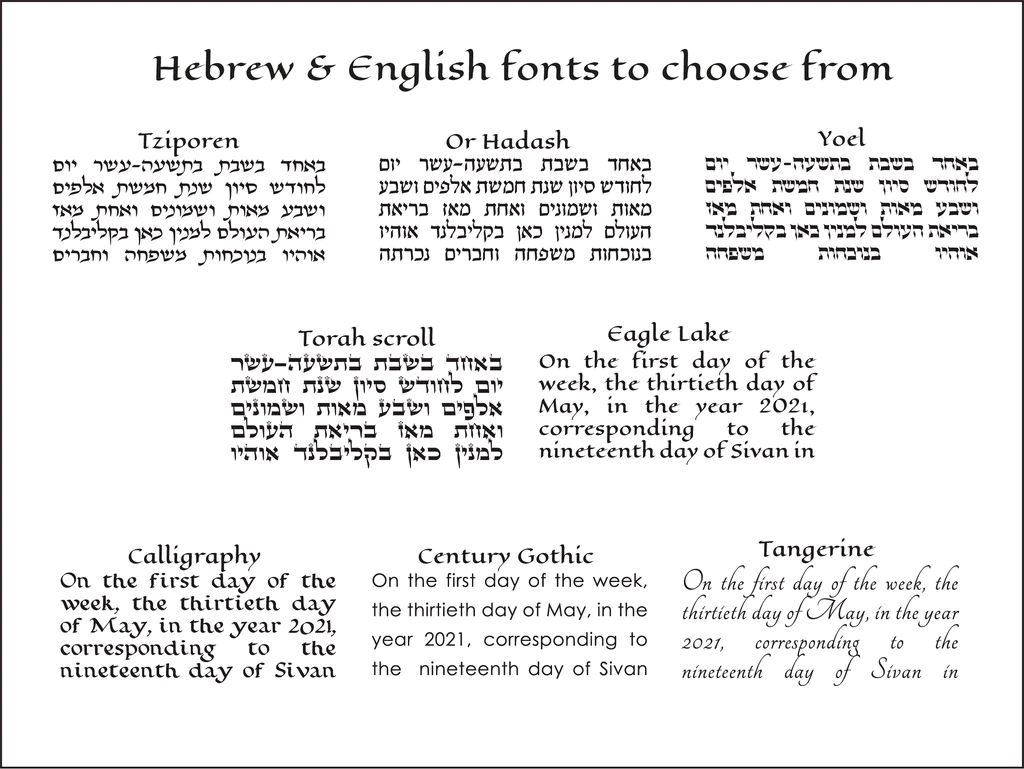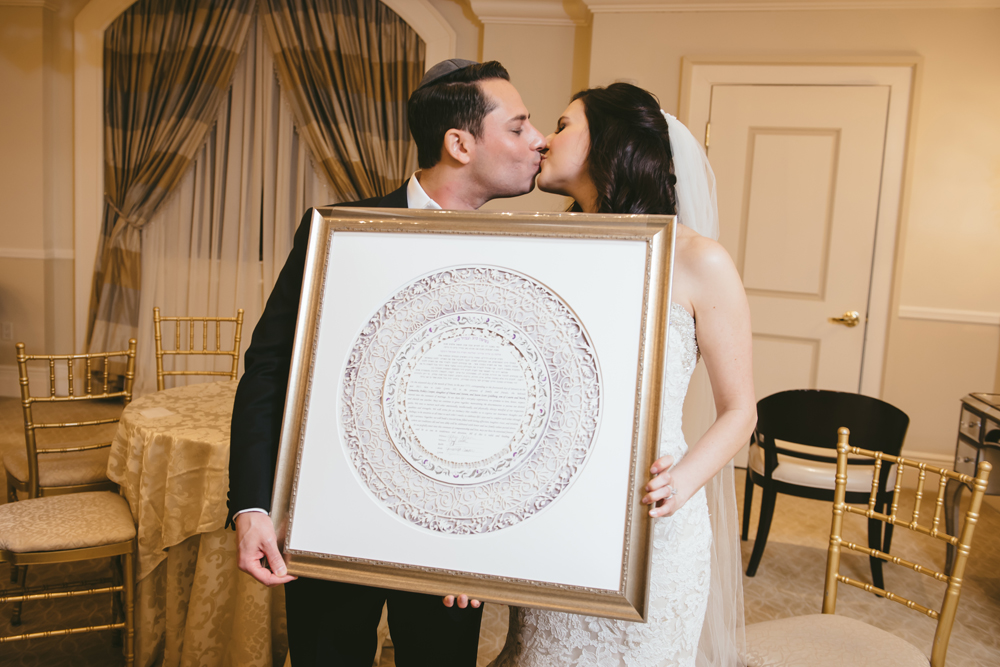This comprehensive review delves into the rich tapestry of symbolism and meaning embodied in Ketubah themes. The Ketubah, a traditional Jewish marriage contract, is much more than a legal document – it’s a work of art that tells a story. Each design element holds profound significance, reflecting the aspirations, beliefs, and cultural heritage of the couple. From the timeless motifs to the contemporary interpretations, this review explores the myriad ways these themes are expressed.
The Historical Root of Ketubah and its Themes
Ketubah, a Jewish marriage contract, has a rich history dating back thousands of years. Its origins can be traced to ancient Jewish communities, where it served as a legal document outlining the rights and responsibilities of a husband towards his wife. The ketubah has evolved over time, reflecting the cultural and historical context of the Jewish people.
The themes depicted in ketubahs are deeply rooted in Jewish traditions and symbolism. They often incorporate motifs such as vines, flowers, and birds, which symbolize fertility, growth, and love. These themes reflect the importance placed on building a strong and fruitful union within the Jewish faith.
In addition to these traditional motifs, ketubahs also incorporate religious symbols, such as the Star of David, menorahs, and Hebrew text. These symbols not only add a sense of spiritual significance to the ketubah but also serve as a reminder of the couple’s commitment to their faith and the Jewish community.
Furthermore, the themes found in ketubahs are not limited to just religious symbols. They can also include elements that reflect the couple’s personal interests, hobbies, or shared experiences. This personalized touch adds a unique and meaningful aspect to the ketubah, making it a reflection of the couple’s journey together.

An illustration of an ancient Ketubah showcasing traditional themes and Hebrew script
Deciphering Traditional Ketubah Motifs: What do they symbolize?
Traditional ketubah motifs are rich in symbolism, each carrying its own meaning and significance. Understanding these symbols can provide a deeper appreciation for the artistry and intention behind these intricate designs.
- 1. Vines and Flowers:
One of the most common motifs found in traditional ketubahs is the depiction of vines and flowers. These symbols represent fertility, growth, and abundance. They serve as a reminder of the couple’s desire for a fruitful and prosperous marriage, filled with love and harmony. - 2. Birds:
Another prevalent symbol in ketubah art is birds, often depicted in pairs. Birds symbolize freedom, love, and unity. They represent the couple’s aspiration for a harmonious partnership, where they support and uplift each other, just as birds do in their nests. - 3. Lions and Lions of Judah:
The lion is a powerful and majestic creature, often seen as a symbol of strength and protection. In traditional ketubahs, lions or the Lion of Judah may be depicted, representing the bride and groom’s commitment to safeguarding and supporting each other throughout their married life.These motifs go beyond mere aesthetic appeal; they serve as visual reminders of the values and aspirations that underpin a successful marriage. They encourage the couple to nurture their relationship, strive for growth, and protect each other. At the same time, these symbols also connect the couple to their Jewish heritage and the broader community.
The Role of Personal Narratives in Ketubah Art
Ketubah art has evolved beyond traditional motifs to incorporate the personal narratives and unique stories of the couples themselves. Couples now have the opportunity to customize their ketubahs with elements that hold personal significance, making each piece a reflection of their love and journey together.
One way personal narratives are incorporated into ketubah art is through the inclusion of meaningful symbols or imagery that represent the couple’s shared experiences or interests. For example, if the couple shares a love for travel, their ketubah may feature elements such as airplanes or landmarks that hold special memories for them. This personal touch adds an intimate and deeply meaningful aspect to the artwork.
Additionally, couples can choose to include text in their ketubahs that tells their love story and highlights the values and promises they hold dear. This can range from a simple narrative of how they met and fell in love, to more elaborate descriptions of their shared dreams and aspirations for their future together. By incorporating their personal narratives into the ketubah, couples create a lasting reminder of their unique bond and the foundation upon which their marriage is built.
The inclusion of personal narratives in ketubah art not only adds depth and personalization to the artwork, but also serves as a source of inspiration and affirmation for the couple. It becomes a visual representation of their commitment, reminding them of the love, support, and shared experiences that brought them together.

An image of a couple deeply engrossed in personalizing their Ketubah design
How Modern Interpretations are Enriching Ketubah Themes?
Modern interpretations of ketubah themes are breathing new life into this ancient tradition, bringing a fresh perspective and relevance to the art form. Artists are pushing boundaries and exploring innovative ways to incorporate contemporary symbols and imagery into ketubah designs, allowing couples to connect with their heritage while embracing their modern identities.
One way modern interpretations are enriching ketubah themes is through the use of abstract and minimalist designs. Rather than relying solely on traditional motifs, artists are experimenting with clean lines, geometric patterns, and bold colors to create visually striking ketubahs that capture the essence of the couple’s love and commitment. These modern designs offer a refreshing departure from the intricate and ornate ketubahs of the past, appealing to couples who appreciate a more contemporary aesthetic.
Furthermore, modern interpretations are also expanding the range of themes and motifs that can be incorporated into ketubah art. Artists are drawing inspiration from a wide array of sources, including nature, pop culture, and even technology. This allows couples to choose ketubahs that align with their personal interests and passions, making the artwork even more meaningful and reflective of their unique relationship.
Another way modern interpretations are enriching ketubah themes is by incorporating diverse cultural influences. As couples come from increasingly diverse backgrounds, artists are embracing this multiculturalism and creating ketubahs that celebrate the merging of different traditions and customs. This not only adds depth and richness to the artwork, but also acknowledges and honors the diverse heritage of the couple.
“Can Contemporary Ketubah Designs Retain their Traditional Essence?”
The question of whether contemporary ketubah designs can retain their traditional essence is a thought-provoking one. While modern interpretations may introduce new elements and styles, there is a delicate balance to be struck in order to preserve the core essence and meaning of the ketubah tradition.
One way contemporary ketubah designs can retain their traditional essence is by incorporating key symbols and motifs that hold deep cultural significance. Elements such as the Tree of Life, the Seven Blessings, or the Star of David can be reimagined in a modern context while still maintaining their traditional symbolism. This allows couples to honor their heritage while embracing a more contemporary aesthetic.
Additionally, the text and language used in the ketubah can play a significant role in preserving its traditional essence. While the wording may be adapted to reflect the couple’s personal values and beliefs, the overall structure and intent of the ketubah can remain rooted in tradition. By using traditional language or adapting it in a respectful manner, the ketubah still maintains its sacredness and historical significance.
Furthermore, the materials and craftsmanship employed in creating contemporary ketubah designs can also contribute to retaining the traditional essence. Artists can utilize high-quality materials such as parchment or handmade paper, and employ traditional techniques such as calligraphy or embossing, to evoke a sense of authenticity and timelessness. This attention to detail and craftsmanship can help bridge the gap between tradition and modernity.

A juxtaposition of a traditional and a contemporary Ketubah, highlighting the balance of heritage and individuality
“The beauty of a Ketubah lies not in its color, but in its details” – Unpacking the Artistic Elements
When it comes to ketubah art, it is often said that the true beauty lies not in its color, but in its intricate details. The artistic elements that make up a ketubah play a crucial role in conveying the symbolism and meaning behind the document. Let’s delve into three key aspects that contribute to the beauty of a ketubah:
- 1. Intricate Borders and Frames:
The borders and frames of a ketubah are often meticulously designed, featuring ornate patterns, motifs, and symbols. These elements not only enhance the visual appeal of the ketubah but also hold significant meaning. They can represent themes such as unity, protection, and the eternal nature of love. The careful craftsmanship and attention to detail in these borders and frames elevate the overall aesthetics of the ketubah, making it a work of art in its own right. - 2. Symbolic Imagery:
Ketubahs often incorporate symbolic imagery to represent various aspects of love, commitment, and Jewish heritage. These symbols can include depictions of doves, representing peace and love, or intertwined vines, symbolizing the intertwining of two lives. The artistic portrayal of these symbols adds depth and layers of meaning to the ketubah, allowing the couple to connect with their shared values and aspirations. - 3. Calligraphy and Typography:
The art of calligraphy plays a significant role in ketubah design. The carefully chosen font styles and lettering techniques not only enhance the legibility of the text but also add a touch of elegance and beauty to the document. Calligraphers often employ different scripts, such as Hebrew or English, to create visually appealing compositions. The skilled use of typography allows for the text to be showcased in a visually pleasing manner, further enhancing the overall aesthetic appeal of the ketubah.
The Cultural Diversity of Ketubah Themes: A Mirror of Jewish Diaspora
Ketubahs, with their rich history and diverse themes, serve as a mirror reflecting the cultural diversity of the Jewish diaspora. Throughout the centuries, Jewish communities around the world have developed unique traditions and customs, which are often reflected in the themes depicted in their ketubahs. From Sephardic to Ashkenazi, Mizrahi to Ethiopian Jews, each community brings its own distinctive cultural elements to the design of the ketubah.
One of the ways in which cultural diversity is showcased in ketubah themes is through the use of traditional symbols and motifs specific to a particular region or community. For example, Sephardic ketubahs may feature intricate designs inspired by Moorish or Spanish art, while Ashkenazi ketubahs often incorporate elements of Eastern European folk art. These cultural influences not only add visual interest but also serve as a reminder of the heritage and ancestral roots of the couple.
Furthermore, the language used in ketubah texts can also reflect the cultural diversity of Jewish communities. While Hebrew is traditionally used, additional languages such as Ladino, Yiddish, or local dialects may be incorporated to reflect the linguistic heritage of the couple or their families. This linguistic diversity not only adds a personal touch to the ketubah but also serves as a testament to the multicultural backgrounds of Jewish individuals.
In addition to symbols and language, ketubahs can also incorporate rituals and customs specific to certain Jewish communities. For example, the ketubah of a Mizrahi couple may include imagery depicting a henna ceremony or the breaking of a glass, while the ketubah of an Ethiopian couple may showcase traditional Ethiopian wedding attire. These cultural rituals and customs embedded in the ketubah serve to celebrate and honor the unique traditions of the couple’s heritage.

A collage of Ketubah designs from different Jewish communities around the world, reflecting cultural diversity
In conclusion, the Ketubah is not merely a marriage contract, but a symbolic representation of a couple’s commitment, shared values, and cultural roots. The myriad themes and their profound symbolism offer a unique opportunity for couples to express their personal narratives in a beautiful and meaningful way. Whether they choose traditional motifs or contemporary designs, the Ketubah serves as a testament to their love and commitment.
